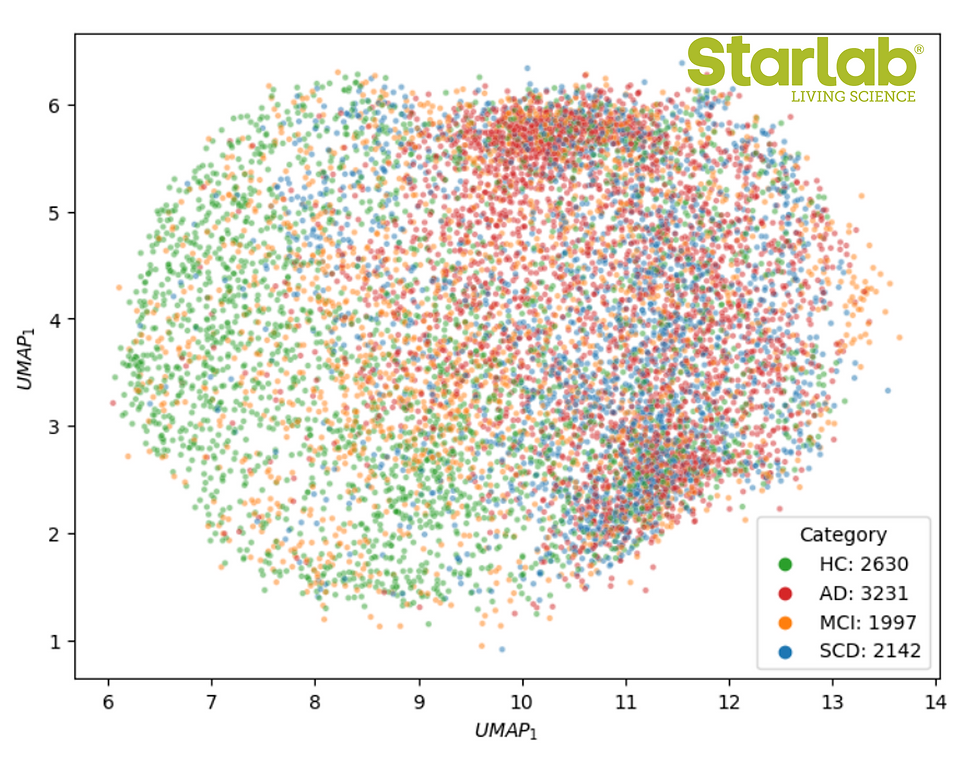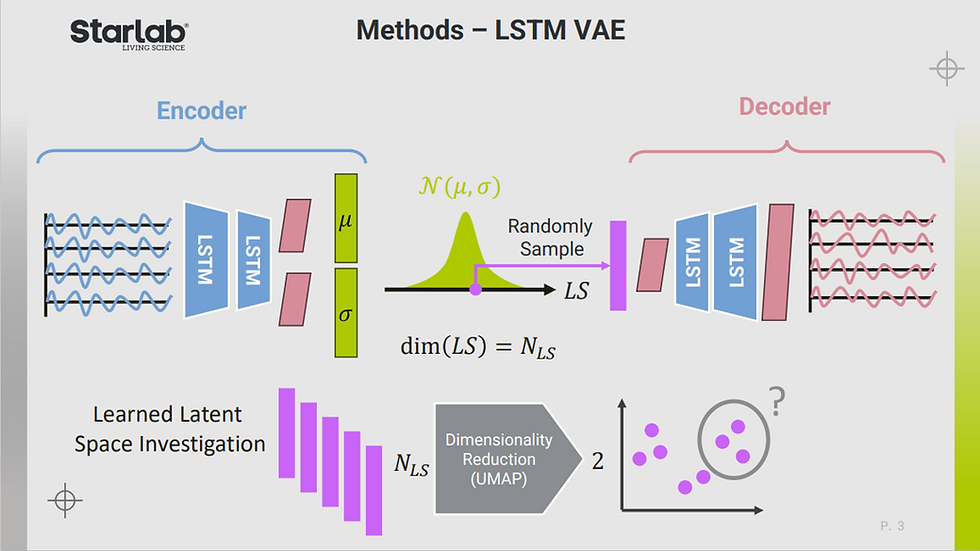🧠 How AI and EEG Are Advancing Alzheimer’s Research
- Angel David Blanco
- Jul 22
- 3 min read

What do you see when you look at the image above? A cluster of dots? A scatter of random points? Or something much more meaningful?
Let us walk you through it.
At Starlab, we’re using AI-powered models to extract hidden structure from raw EEG data — brain signals that reflect the dynamic electrical activity of the mind. The image you're seeing is not random: it's a UMAP projection of the latent space learned by an LSTM-based Variational Autoencoder (VAE) trained on EEG recordings. This unsupervised deep learning model is designed to compress complex time-dependent brain activity into structured, meaningful representations — all without any manual input or labeling.
🧪 Synthetic Data — Proof of Concept
In the first image, we used synthetic EEG-like signals generated for two groups:
🔵 Healthy Individuals
🟠 Impaired Individuals
Even with no prior information about group membership, the model naturally learned to separate the two groups based solely on its effort to reconstruct the input signals. This indicates that the latent space is capturing neurophysiological features relevant to health and impairment — a promising start.
🧠 Real EEG Data — Detecting Cognitive Decline
Things get even more interesting in the second image, where we applied the same model to real EEG data from older adults with different clinical profiles:
🟢 Healthy Controls (HC)
🔴 Alzheimer’s Disease (AD)
🟠 Mild Cognitive Impairment (MCI)
🔵 Subjective Cognitive Decline (SCD)
Again, with no labels provided, the model’s latent space naturally organized itself in a way that clearly separates healthy individuals from those on the pathological spectrum. This emergent structure suggests that the model is picking up on subtle EEG markers of cognitive decline, long before they become clinically obvious.

🔍 What Makes This Approach Powerful?
This is part of the research we presented at AD/PD 2025 – Advances in Science & Therapy, where our team — David Aquilué-Llorens, Ángel Blanco Casares, Ph.D., Claire Braboszcz, and Aureli Soria-Frisch — showcased how unsupervised AI models can autonomously extract neurophysiological features from raw EEG.

More specifically, the LSTM-VAE architecture learns from temporal structure and frequency dynamics, including changes in alpha and delta band powers, which are known biomarkers in neurodegenerative conditions. What's exciting is that the model captures these features in a data-driven and objective way, bypassing the need for handcrafted features or expert tuning.
This approach enables:
✅ Faster analysis of large EEG datasets
✅ Objective identification of pathological patterns
✅ Early-stage detection of neurodegenerative conditions like Alzheimer’s
🔬 The Future of Brain Health
AI + EEG = a powerful alliance for brain research.
We're only scratching the surface of what’s possible when combining deep learning with electrophysiology. From understanding disease progression to enabling personalized diagnostics, this line of work opens up new frontiers for early, accessible, and reliable detection of cognitive disorders.
Authors:
David Aquilué-Llorens, Ángel Blanco Casares, Ph.D., Claire Braboszcz, Aureli Soria-Frisch
Interested in collaborating?
If you're running a clinical trial and want to explore how this technology could support patient stratification, biomarker discovery, or early detection, we’d love to hear from you.
📩 Reach out to us at: info@starlab.es




Comentários